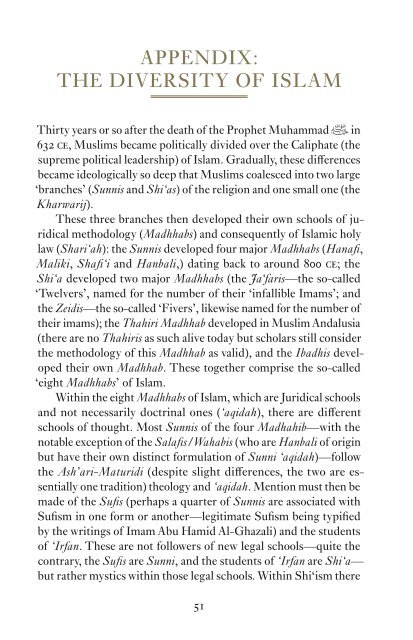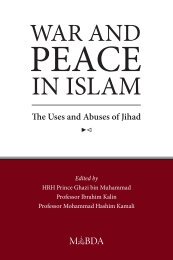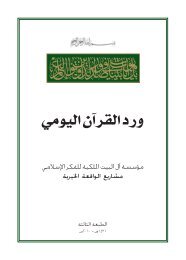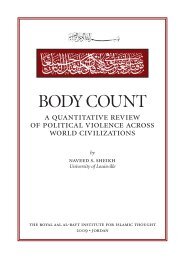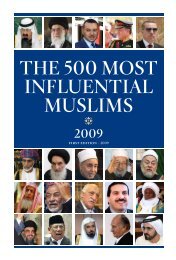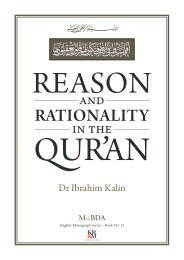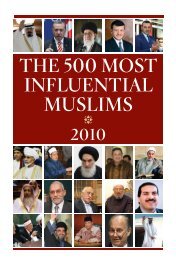You also want an ePaper? Increase the reach of your titles
YUMPU automatically turns print PDFs into web optimized ePapers that Google loves.
APPENDIX:<br />
THE DIVERSITY OF ISLAM<br />
Thirty years or so after the death of the Prophet Muhammad in<br />
632 ce, Muslims became politically divided over the Caliphate (the<br />
supreme political leadership) of Islam. Gradually, these differences<br />
became ideologically so deep that Muslims coalesced into two large<br />
‘branches’ (Sunnis and Shi‘as) of the religion and one small one (the<br />
Kharwarij).<br />
These three branches then developed their own schools of juridical<br />
methodology (Madhhabs) and consequently of Islamic holy<br />
law (Shari‘ah): the Sunnis developed four major Madhhabs (Hanafi,<br />
Maliki, Shafi‘i and Hanbali,) dating back to around 800 ce; the<br />
Shi‘a developed two major Madhhabs (the Ja‘faris—the so-called<br />
‘Twelvers’, named for the number of their ‘infallible Imams’; and<br />
the Zeidis—the so-called ‘Fivers’, likewise named for the number of<br />
their imams); the Thahiri Madhhab developed in Muslim Andalusia<br />
(there are no Thahiris as such alive today but scholars still consider<br />
the methodology of this Madhhab as valid), and the Ibadhis developed<br />
their own Madhhab. These together <strong>com</strong>prise the so-called<br />
‘eight Madhhabs’ of Islam.<br />
Within the eight Madhhabs of Islam, which are Juridical schools<br />
and not necessarily doctrinal ones (‘aqidah), there are different<br />
schools of thought. Most Sunnis of the four Madhahib—with the<br />
notable exception of the Salafis/Wahabis (who are Hanbali of origin<br />
but have their own distinct formulation of Sunni ‘aqidah)—follow<br />
the Ash’ari-Maturidi (despite slight differences, the two are essentially<br />
one tradition) theology and ‘aqidah. Mention must then be<br />
made of the Sufis (perhaps a quarter of Sunnis are associated with<br />
Sufism in one form or another—legitimate Sufism being typified<br />
by the writings of Imam Abu Hamid <strong>Al</strong>-Ghazali) and the students<br />
of ‘Irfan. These are not followers of new legal schools—quite the<br />
contrary, the Sufis are Sunni, and the students of ‘Irfan are Shi‘a—<br />
but rather mystics within those legal schools. Within Shi‘ism there<br />
51


